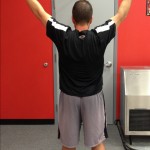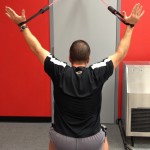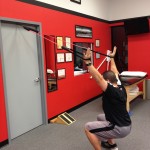Brian Schiff’s Blog
Injury Prevention, Sports Rehab & Performance Training Expert
I am currently writing up a series of corrective exercises related to the Functional Movement Screen (TM) that shows some common “go to” corrective drills I use on a regular basis. So, I will include those in my blog as I go since many people will benefit from the exercises to maximize mobility and stability.
I started off with a Deep Squat corrective exercise. If you are unfamiliar with the FMS, feel free to send me an email and I will send you a copy of a basic in-service I did on it to give you a better picture of the screening movements. Many issues can impact the overhead squat. While I often find ankle and hip mobility to be the primary limiting issues, an overlooked problem may include poor scapulothoracic stability. The resisted overhead squat will help correct deficiencies in that region.
Execution: I prefer to use a Cook band for this drill, however, you may also opt for tubing with handles or a TRX. The important thing is to use a partner or have whatever equipment you use firmly and safely anchored so you can squat without it giving way.
Begin in an upright position while looping the straps/handles over the back of the wrists or grabbing the handles with palms facing away from you. Slowly squat down as you actively retract the scapulae while keeping the arms in an overhead position. Pause at the bottom and return to upright. Adjust the distance from the anchor point to achieve the proper resistance level, keeping in mind that too much resistance will compromise form and result in a forward trunk lean.
Application: This is a very effective training exercise to facilitate proper scapulothoracic muscle activation. If a client has latissiumus, pec or teres major tightness, performing soft tissue mobilization beforehand is suggested. Cueing the client to actively pull the shoulder blades “down and back” is helpful in many cases. In many cases, they are so upper trap dominant they do not use proper motor patterns with overhead activity.
Regression: Instruct the client to do a forward facing overhead squat near a wall. Let them move close enough to where their fingertips nearly or just touch the wall at the bottom of the squat. The cues for muscle activation remain the same.
Progression: In the bottom of the overhead squat, instruct the client to hold while the trainer will provide some light perturbations of the bands to maximize neuromuscular activation and further groove the right pattern. Form should guide how much perturbation and once fatigue begins to impact control the exercise should stop. You may do fewer repetitions with this more advanced exercise.




